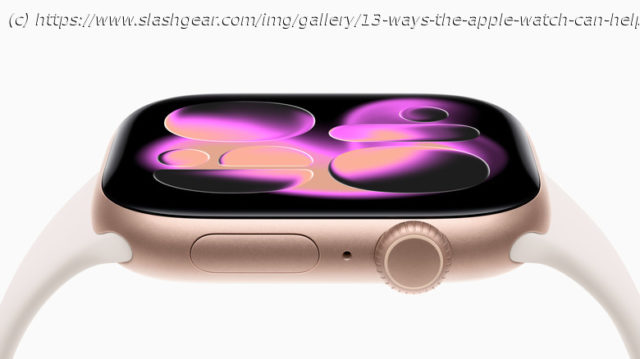Apple Watch makes it easy to track sleep, workouts, heart health, and more while keeping your data private and giving you handy safety alerts.
Recently, I saw a YouTuber argue in a video that the Apple Watch is a useless product. They claimed it was just Apple coming up with increasingly desperate ways for you to give it your money, for something that nobody actually needs. Then the commenters roasted that YouTuber alive. People said things along the lines of, «Actually, I own an Apple Watch and it’s one of the best purchases I ever made», or words to that effect. Nurses, first responders, coaches, teachers, and photographers all found it invaluable for their specific use case. But in a general sense, it’s very, very good for health and fitness.
Now, this article isn’t to argue that Apple is an amazing company and the Apple Watch is the best smartwatch out there. There are plenty of amazing budget-friendly smartwatches to choose instead of an Apple Watch. In fact, before you buy an Apple Watch, there are some key things you should know. Instead, I’m going to discuss the ways the Apple Watch could have a meaningful impact on a person’s health and life. I’ll approach this based on hard evidence and subjective personal experience as a happy Apple Watch user for years. If you’re on the fence about whether you need an Apple Watch for health reasons, here are 13 arguments in favor.Get the ultimate sleep tracking
Sleep deprivation has to be one of the most underrated health concerns. Almost a third of Americans experience some degree of sleep deprivation, and there’s a laundry list of health concerns that come with it. Yet most people don’t even blink when they go to bed late. If you want to sleep better, it helps having an accurate read on sleep duration and quality. The Apple Watch is an all-in-one package for just that.
The Apple Watch is incredibly good at detecting when you’re asleep and what sleep stage you’re in; mine even keeps track of unplanned naps. Open the Health app after a night’s sleep and you’ll see when you went to sleep, when you entered REM, when you woke up, and what your heart rate and respiratory rate were. The data it gathers grows to show you sleep trends over weeks, months, and years, and then rates your rest with a sleep score.
In addition to this, your Apple Watch helps you plan your sleep and build a healthier wind-down routine. It tells you when the earlier-than-normal alarm you’ve set doesn’t meet your sleep goal, and turns on the Sleep Focus before bed as a gentle reminder that it’s time to get off your phone. At night, the watch goes black and requires a crown press to get a dim, non-disruptive clock face. Best of all, it wakes you with a silent wrist vibration alarm that won’t disrupt a sleeping partner. But if you’re worried about sleeping through that alarm, try this Apple Watch trick.Get more out of your workouts
The number two reason to buy an Apple Watch is, naturally, workout tracking. Start a workout, and your Apple Watch will track your exercise duration, heart rate, calories burned, and other relevant metrics. You can set goals for each. While you can manually create your own workouts, the existing presets cover literally dozens of workout types. The Apple Watch even connects to some gym equipment.
It’s important to note that the Apple Watch is great whether you’re a gym rat who meticulously jots down your sets, or just someone who goes for the endorphins. In either case, it provides a sense of accountability during and after the workout; you can track your workouts over time and see whether you need to put in more effort. One feature I love is how it notices when you’ve stopped moving and your heart rate has gone down, sending you a notification asking whether you’d like to end the workout. It’s intended for people who forgot to stop a finished workout, but it unintentionally serves as a reminder to get off your phone and do another set.
For those who need a bit more motivation, the Workout Buddy feature serves as an AI personal trainer of sorts. I personally disabled this one, but I can see how it would be helpful to some. Your Apple Watch also shows fairly accurate distance and speed after a calibration walk. There’s nothing stopping you from trying the best Apple Watch Health & Fitness apps if Apple’s built-in tools are not enough for you.Limit how sedentary you are
Being too sedentary is an issue that’s sadly way too common in the modern age. We sit for long periods of the day, seldom standing up, rarely moving around, or going for a walk. The Apple Watch can help with that thanks to its famous fitness rings: a red one for calories burned when moving around, a green one for exercise, and a blue one for how frequently you stand up.
The move ring is influenced by workouts, but it’s also helpful for tracking random, passive calorie burn throughout the day; things like playing fetch can count. You’ll be able to easily see the days when you were lounging around versus the ones when you were hustling and bustling, making for a subtle reminder to be more active. What I love is how the Apple Watch will (seemingly passive-aggressively) notify you when there’s been a significant drop in recent activity — almost a polite way of saying you’ve become a couch potato.
It also tracks how often you stand up, with the aim being to stand up every hour at least 12 times a day. That’s a low bar, of course, but it gives you a nudge when you get a notification after sitting for too long. Keeping track of steps also highlights how active — or inactive — you’ve been.Protect your hearing
Yet another underrated public health scourge people don’t take seriously is noise pollution.






